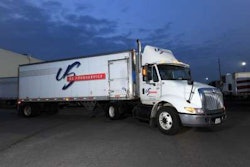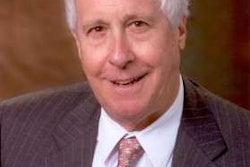FedEx Corp. on Tuesday, July 21, announced the addition of 92 hybrid-electric trucks to its delivery fleet – the first standard FedEx delivery trucks converted to hybrid-electric systems. The Memphis, Tenn.-based company says the addition of the 92 trucks increases its fleet of hybrid-electric vehicles by more than 50 percent, from 172 to 264.
FedEx says its hybrid-electric fleet has logged more than four million miles of revenue service since being introduced in 2004, reducing fuel use by 150,000 gallons and carbon-dioxide emissions by 1,521 metric tons, which is equivalent to removing 279 cars from the road annually.
The hybrid conversions were produced in Charlotte, N.C., during the past six months and created 50 new, temporary green jobs in the area. The converted hybrids were developed with Freightliner Custom Chassis Corp. (FCCC) and Eaton Corp., which provided the hybrid-electric systems. The standard FedEx trucks used in the retrofit program were 2000 or 2001 models with 300,000 to 500,000 miles driven. FedEx says an added benefit of the conversion program is that it not only reduces pollution but also extends the life of the vehicles, helping to eliminate waste production and creating a reduce-and-reuse program.
“The conversion of these standard FedEx trucks into hybrids is the latest milestone in our drive to advance and adopt hybrid technology into our fleet and the broader industry,” says John Formisano, vice president of global vehicles for FedEx Express. “FedEx and our suppliers have demonstrated that converted hybrids are a viable lower-cost option compared to purchasing new hybrids. We now need government incentives to end a Catch-22 situation – production volumes are low due to high cost, and costs will only come down with higher production volumes.”
The retrofit hybrid trucks are projected to improve fuel economy by 44 percent, decrease particulate matter by 96 percent and reduce smog-causing (NOx) emissions by 75 percent compared to the standard FedEx Express delivery truck. The 92 retrofitted hybrid vehicles will be placed into service in California, primarily in the Los Angeles, San Diego and San Francisco metropolitan areas.
Formisano applauded the California government for continuing to provide incentive funding for hybrid truck purchases, which allowed FedEx to place its first hybrid truck into service in the state in 2004 and continue to add hybrids to its fleet during the past five years.
The retrofit hybrids will display the FedEx EarthSmart logo, which is a symbol of the FedEx commitment to connect the world in responsible and resourceful ways that are more efficient and better for the environment. In the coming months, all FedEx hybrid trucks will be rebranded as a part of the EarthSmart initiative.
“Hybrid technology helps FedEx reduce emissions and fuel use as we work to increase the efficiency of our vehicle fleet,” says Mitch Jackson, director of environmental affairs and sustainability for FedEx Corp. “We are eager for additional government and industry support to find more affordable options for hybrid trucks, so that we may adopt them into our fleet at a faster pace.”
In converting the standard delivery vehicles, the powertrain equipment – including the engine, transmission, fuel tank and driveshaft – were replaced with a 2007 Cummins ISB 200 hp engine and Eaton hybrid-electric system. Costs were reduced by utilizing the existing chassis and body.
The vehicles feature a diesel engine coupled with an electric motor/generator and lithium-ion batteries. These batteries capture and store energy during the regenerative braking phase of vehicle operation, eliminating the need to plug into an electrical source. The hybrid controller selects the most efficient mode of operation – diesel or electric – depending upon current operating conditions and driver demand.













